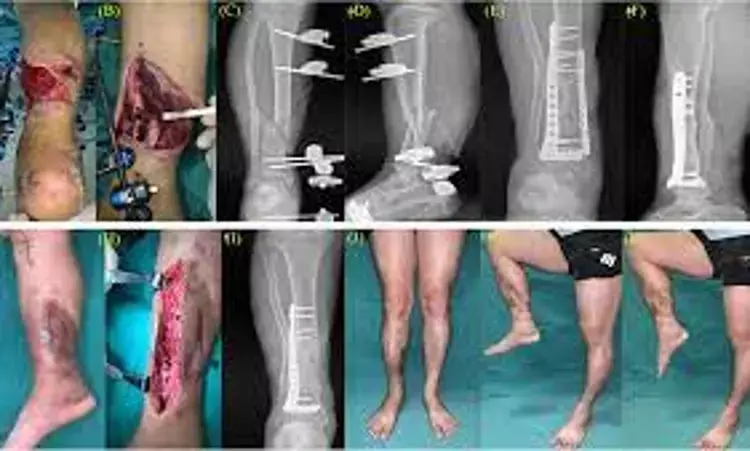- Home
- Medical news & Guidelines
- Anesthesiology
- Cardiology and CTVS
- Critical Care
- Dentistry
- Dermatology
- Diabetes and Endocrinology
- ENT
- Gastroenterology
- Medicine
- Nephrology
- Neurology
- Obstretics-Gynaecology
- Oncology
- Ophthalmology
- Orthopaedics
- Pediatrics-Neonatology
- Psychiatry
- Pulmonology
- Radiology
- Surgery
- Urology
- Laboratory Medicine
- Diet
- Nursing
- Paramedical
- Physiotherapy
- Health news
- Fact Check
- Bone Health Fact Check
- Brain Health Fact Check
- Cancer Related Fact Check
- Child Care Fact Check
- Dental and oral health fact check
- Diabetes and metabolic health fact check
- Diet and Nutrition Fact Check
- Eye and ENT Care Fact Check
- Fitness fact check
- Gut health fact check
- Heart health fact check
- Kidney health fact check
- Medical education fact check
- Men's health fact check
- Respiratory fact check
- Skin and hair care fact check
- Vaccine and Immunization fact check
- Women's health fact check
- AYUSH
- State News
- Andaman and Nicobar Islands
- Andhra Pradesh
- Arunachal Pradesh
- Assam
- Bihar
- Chandigarh
- Chattisgarh
- Dadra and Nagar Haveli
- Daman and Diu
- Delhi
- Goa
- Gujarat
- Haryana
- Himachal Pradesh
- Jammu & Kashmir
- Jharkhand
- Karnataka
- Kerala
- Ladakh
- Lakshadweep
- Madhya Pradesh
- Maharashtra
- Manipur
- Meghalaya
- Mizoram
- Nagaland
- Odisha
- Puducherry
- Punjab
- Rajasthan
- Sikkim
- Tamil Nadu
- Telangana
- Tripura
- Uttar Pradesh
- Uttrakhand
- West Bengal
- Medical Education
- Industry
Masquelet technique and double plate fixation combo effectively treats large segmental bone defects of distal tibia: Study

Masquelet technique and double plate fixation combo effectively treats large segmental bone defects of the distal tibia suggests a study published in the BMC Surgery.
There is no effective consensus on the choice of internal fixation method for the Masquelet technique in the treatment of large segmental bone defects of the distal tibia. Thus, the study aimed to investigate the outcomes of the Masquelet technique combined with double plate fixation in the treatment of large segmental bone defects. This was a retrospective study involving 21 patients with large segmental bone defects of the distal tibia who were treated between June 2017 and June 2020. The length of bone defect ranged from 6.0 cm to 11 cm (mean, 8.19 cm). In the first stage of treatment, following complete debridement, a cement spacer was placed to induce membrane formation. In the second stage, double plate fixation and autologous cancellous bone grafting were employed for bone reconstruction. Each patient’s full weight-bearing time, bone healing time, and Iowa ankle score were recorded, and the occurrence of any complications was noted.
Results: All patients were followed up for 16 to 26 months (mean, 19.48 months). The group mean full weight-bearing time and bone healing time after bone grafting were 2.41 (± 0.37) months and 6.29 (± 0.66) months, respectively. During the treatment, one patient had a wound infection on the medial side of the leg, so the medial plate was removed. The wound completely healed after debridement without any recurrence. After extraction of iliac bone for grafting, one patient had a severe iliac bone defect, which was managed by filling the gap with a cement spacer. Most patients reported mild pain in the left bone extraction area after surgery. The postoperative Iowa ankle score range was 84–94 (P < 0.05). In this cohort, 15 cases were rated as “excellent”, and 6 cases as “good” on the Iowa ankle scoring system. The Masquelet technique combined with double plate fixation is a safe and effective method for the treatment of large segmental bone defects of the distal tibia.
Reference:
Wang, Z., Zou, C., Zhan, X. et al. Application of double plate fixation combined with Masquelet technique for large segmental bone defects of distal tibia: a retrospective study and literature review. BMC Surg 24, 103 (2024). https://doi.org/10.1186/s12893-024-02396-1
Dr. Shravani Dali has completed her BDS from Pravara institute of medical sciences, loni. Following which she extensively worked in the healthcare sector for 2+ years. She has been actively involved in writing blogs in field of health and wellness. Currently she is pursuing her Masters of public health-health administration from Tata institute of social sciences. She can be contacted at editorial@medicaldialogues.in.
Dr Kamal Kant Kohli-MBBS, DTCD- a chest specialist with more than 30 years of practice and a flair for writing clinical articles, Dr Kamal Kant Kohli joined Medical Dialogues as a Chief Editor of Medical News. Besides writing articles, as an editor, he proofreads and verifies all the medical content published on Medical Dialogues including those coming from journals, studies,medical conferences,guidelines etc. Email: drkohli@medicaldialogues.in. Contact no. 011-43720751


